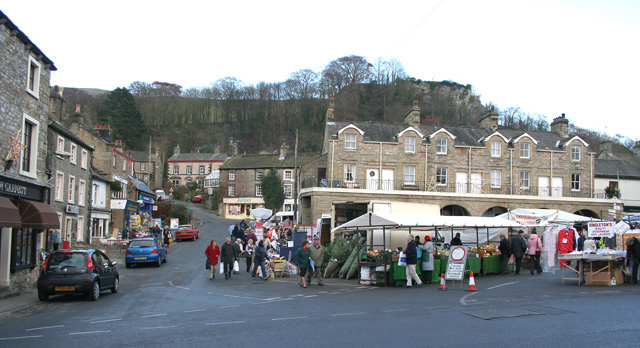
The North Yorkshire town of Settle is best known as the starting point of what is quite possibly the most famous railway line in Great Britain – The Settle to Carlisle Railway.
Nearby Giggleswick was the first town in the region to have its own station, but opening of the Settle to Carlisle line in 1875 dramatically changed travel in the Dales and Cumbria.
The line covers 73 miles and was built by more 6,000 navvies who had to endure harsh conditions in order to get the job done, with hundreds losing their lives. The story of the line is quite tragic, but today it provides one of the most scenic journeys imaginable.
Around ten miles to the north of Settle is the Ribblehead Viaduct. This magnificent structure is a key attraction and has 24 arches with an elevation of 165 feet. It took almost four years to construct and spans nearly a quarter of a mile.
Under the viaduct you can see some trenches which remain from Batty Green, a wooden village that around 2,000 navvies called home during the construction phase.
The village was infamous in its day as it saw regular violence amongst its inhabitants. There were also saloons and ladies of the night so some people have called Batty Green the Wild West of England.
Yorkshire Three Peaks
As well as being a great place for train enthusiasts, Settle is a good base for the Yorkshire Three Peaks. Made up of the mountain ranges of Ingleborough, Whernside and Pen-y-Ghent, the peaks are an enjoyable yet challenging task for walkers.
People trying to raise money for charities and those on corporate team building exercises often climb the mountains, but is well worth it for the incredible views they offer alone.
Two men named DR Smith and JR Wynne-Edwards were the first to complete the challenge back in 1887. Their recorded time was little over ten hours, but most people take much longer than that today.
Indeed, anyone who can finish the 26 mile route in 12 hours or under is invited to join the exclusive ‘Three Peaks of Yorkshire Club’, which is run by the Pen-y-Ghent café.
There are also some brilliant walks around Settle itself. One of which runs alongside the River Ribble and passes old snuff and cotton mills as well as the Settle Hydro, which uses the force of the river to generate electricity for the town in a sustainable manner. On some days you will also able to see kingfishers, salmon and heron.
A good day to visit the centre of the town is Tuesday as that is when it hosts its fantastic market. It has an array of stalls with most outside at the market square while a few are away from the elements inside Victoria Hall.
Close by you will see a blue plaque dedicated to the world famous composer Edward Elgar. While a native of Worcester, Elgar used to regularly visit Settle to see his friend Dr Charles Buck.
One of Settle’s most intriguing buildings can be found just a few streets away on School Hill. Named The Folly, the Grade I listed building is quite striking. It was built in 1675 by Richard Preston, but stood empty for many years following his death. It was restored by the North Craven Building Preservation Trust in the late 1990s and opened to the public as a museum in 2001.
Inside you can see a number of exhibitions of life in this part of the Yorkshire Dales and the Forest of Bowland, a designated Area of Outstanding Natural Beauty which is just a few miles west of the town.
Fans of literature are drawn to the town each October as it hosts the Settle Storytelling Festival which features internationally renowned authors as well as local writers.
A visit is good at any other time of the year, though, as Settle provides much to see and do including canoeing, caving and riding in a hot air balloon as well as relaxing in a traditional pub or tasting the delights of a Yorkshire Pudding.
